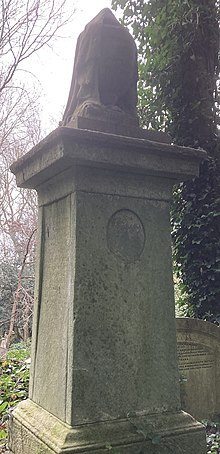Joshua Milne
[2] By 1839 Milne had lost interest in the values of life contingencies, and turned to natural history; he is said to have possessed one of the best botanical libraries in London.
[2] When Milne entered the field, life tables were based on the data taken by Richard Price from the burial registers (1735–80) of All Saints' Church, Northampton.
After a long correspondence (12 September 1812 – 14 June 1814) with Heysham, he published his major work A Treatise on the Valuation of Annuities and Assurances (1815).
He was the first to compute accurately, at the cost of heavy algebra, the value of fines (i.e. payments to be made at the successive deaths of persons).
[5] His notation for the expression of life contingencies suggested that of Augustus De Morgan in his Essay on Probabilities.

